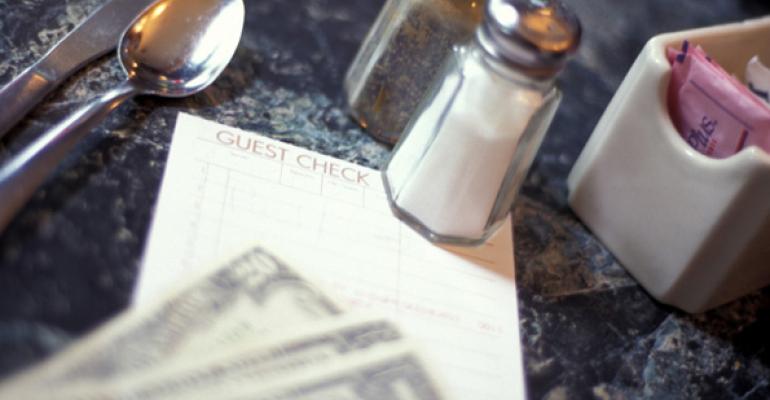It can be easy to overlook the tip jar on the counter when you’re a customer. But what happens when a payment transaction puts a patron on the spot to actively accept, or deny, the addition of a tip? Here’s a look at the customer psychology behind tipping, and how it’s impacted by the way payments are processed.
As point-of-sale payment (POS) options begin to include additional conveniences including mobile payments via a smartphone or tablet device, restaurants may have an opportunity to boost tips beyond the passive approach of a tip jar, with suggestive selling through technology. Though tip functionality depends on the payment provider, many payment processors in the mobile payment space now suggest an appropriate range of tip percentages (like 10 percent, 15 percent or 20 percent) in addition to allowing the customer to input the exact amount they’d like to leave. A similar message can be printed onto the receipt a customer signs at the point of sale, especially when using a checkout system that takes place at the table.
Why are these changes in payment processing technology impacting tips? Because both require the customer to acknowledge tips head on, regardless of their intent. In the case of mobile payment, for example, customers must perform some action on the tip screen before they can move forward. Likewise at the point of sale: The customer must complete the transaction (with or without a tip), by signing and handing the final receipt back to the person processing the transaction.
Though customers are ultimately in control of whether and how much they tip, some estimate that tip frequency has increased by nearly 50 percent, since the functionality was implemented into the checkout flow. Though the spirit of tipping is to express monetary appreciation for great service, Cornell professor and tipping expert Michael Lynn, who researches the psychology behind tipping, has performed numerous studies that contradict that notion, particularly in the restaurant industry. Contrary to the belief of many economists that tipping is a primary way to incentivize good service, Lynn’s research concludes that because tip amounts aren’t always proportional to the size of the check, the key driver behind tipping behavior may have less to do with service and more with social pressure. When faced with a glowing screen during a mobile payment transaction, for example, consumers may essentially be shamed into tipping, even for a small purchase for which they could otherwise justify not tipping because they don’t have extra cash to drop in a tip jar.
Tipping far outdates advances in restaurant POS technology. But as Lynn points out in a paper published for the Cornell University School of Hotel Administration, new payment processing options, including the ability to process a customer’s check via mobile device right at their table, can meld “old school” and “new school” tipping methodologies.
Lynn’s earlier research suggests that when servers display certain behaviors—noting the customers’ name, squatting down next to the table, being physically close to the customer and even bringing mints/candy—tips increase. His later work, updated in part to reflect new payment technologies, suggests that providing tipping guidelines helps boost tips, too. Thanks to advances in POS technology, restaurant staff can combine the two findings to, ideally, maximize the potential for customer tips.
Regardless of the payment system your restaurant uses, there’s an opportunity to be more proactive in convincing customers to tip — even when they “self-pay” with a mobile device. By learning the “why” behind consumer tipping behaviors, you can design a point-of-sale experience that utilizes an optimized a checkout process and that will make customers want to tip. Given how much operators pay tipped workers—the national rate has been frozen at $2.13 an hour since 1991—the role tip amounts play in the restaurant industry compensation scheme may become the next front in the minimum wage battle. Be ready.
Tim Flachman of Bepoz America is a POS expert who writes about topics including restaurant technology, software, entrepreneurship and more.





